Town Hall Recap: High School Redesigned
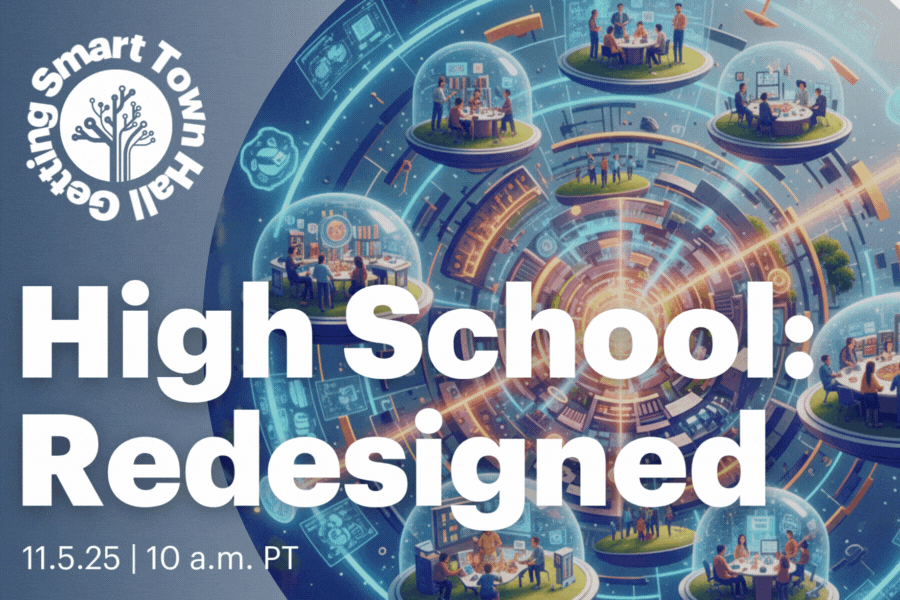
This event brings together leaders from three innovative initiatives—the Virginia Learning Innovation Network (VaLin), the Carnegie Foundation’s Future of High School Network, and Real World Learning—who are at the forefront of creating more relevant and effective learning experiences for all students. Our speakers will share their insights and strategies for redesigning high schools to better prepare students for the challenges and opportunities of the future. Attendees learned from VaLin’s work in implementing deeper learning strategies and increasing equity across Virginia, the Carnegie Foundation’s national effort to shift from a time-based to a competency-based model of education, and Real World Learning’s success in preparing students for the workforce through immersive, hands-on experiences with industry partners.
Key Takeaways
- The Importance of R&D in Education: Many participants emphasized the need for research and development in schools to test and refine innovative models. Small-scale pilot projects and prototypes were highlighted as effective ways to create spaces for experimentation and learning.
- Balancing Skills Development: A recurring theme was the need to balance technical, core, and durable skills in education. While core skills like ELA and math often dominate, durable skills such as critical thinking and collaboration are equally vital for student success.
- Community and Collaboration Drive Change: Collaboration with local businesses, community organizations, and intermediaries was identified as essential for sustainable transformation. Partnerships help bridge the gap between education and real-world applications.
- The Role of Leadership and Vision: System leaders need actionable data and processes to envision and implement sustainable change. Evidence-based guidance and frameworks, like those provided by the Carnegie Foundation and Getting Smart, were seen as critical tools.
- Avoiding Tracking While Expanding Pathways: Programs like those in Kansas City, Kansas Public Schools, were praised for offering career pathways without “tracking” students into fixed roles. Instead, these programs focus on transferable skills and expanding opportunities.
- The Power of Networks: Networks like Virginia Leads Innovation Network (VALIN) and Scaling Student Success in California were highlighted as powerful platforms for sharing resources, building coalitions, and supporting systemic change.
- The Demand for Meaningful Experiences: There is a growing demand for meaningful learning experiences and credentials that align with real-world needs. This demand must be met with innovative models and a commitment to change.
Slide Deck
Transcript
Tom Vander Ark: We’re going to take a quick overview of the last 40 years of redesign. But I do want to note that starting in the 1950s and accelerating in the 1960s, we really had the birth of the modern comprehensive high school, and it spread nationally. We had things that looked like that Eisenhower-era institution built all over the country, with the all-too-familiar institutional hallway of lockers and that footprint. Flying over America, you’d see the football field and the baseball fields—that became the blueprint for the American high school. What we’re going to talk about today is the 40 years of really trying to mitigate against that big comprehensive high school that Conant made the case for in 1959.
I’ll point out a couple of highlights along the way. One, Citibank founder Sandy Weill kicked off the National Academy Foundation in 1980. I think of that as the birthplace of modern career academies. Today, NAF is going strong with about 620 career academies across the country. A beautiful echo of that happened in 2009 when the Irvine Foundation launched the Linked Learning Initiative. Districts all over California developed updated career academies, and those organizations that came from that are going strong today, promoting career academies.
“A Nation at Risk” is the modern beginning of the standards movement, which paralleled these reform efforts. In some ways, it strengthened them; in other ways, it locked in the old courses, credits, and traditional views of assessment. I think the most important work in terms of design principles came when Ted Sizer launched the Coalition of Essential Schools in 1984. He really gave us a beautiful way to think about high school as a place where learners learn how to use their minds well: “less is more,” “student as worker.” A couple of years after that, the Expeditionary Learning initiative introduced their 10 design principles, including my favorite one, “the having of wonderful ideas.” A beautiful set of design principles that, in many respects, laid the groundwork for all of the Horizon Two work done over the last 30 years.
Some really notable small schools started in the 1990s. Minnesota New Country was the second charter in the country and kind of the beginning of the modern micro-school. It’s a very cool, small, project-based school. It was a teacher-powered school as well, run by a teacher cooperative. A couple of years later, Doc and Elliot started The Met in Providence, Rhode Island. I met with its first graduating class in 1999 and still remember what a radical redesign it was of the traditional high school, with a focus on “leaving to learn.” It remains one of the most important innovations in high school reform in the last 40 years.
In 1995, the city of New York restructured Julia Richmond from a comprehensive high school to a group of small schools, including Urban Academy. That led to the New York Performance Standards Consortium, an important group of project-based schools that took performance assessment seriously. A couple of years later, Urban Assembly, one of the great networks of schools, launched in New York City. You could add New Visions, Outward Bound, Asia Society, the Internationals—really hundreds of very good new small schools in New York City. You could mention that J.C. Ard was running high schools during the 2000s when Joel Klein put the pedal to the metal on new schools in New York.
In 1996, the Napa School District launched Napa New Tech. A couple of years later, that became the New Tech Network, a great voluntary network of mostly district schools committed to project-based learning wall-to-wall. Larry Rosenstock started High Tech High in 2000. That’s the godfather of modern project-based learning. A bunch of us are going there next week to celebrate that important network that continues to inform the practice of thousands of schools around the world.
A couple of years later, Rebecca and some colleagues started the first competency-based high school in the country, Highland Tech. Rebecca was building on some work from the Chugach School District, really the first competency-based school district. Rebecca, I think of this as the beginning of the modern personalized and competency-based movement. A few years later, a number of states began launching blended learning networks, including Ohio. That was an early codification of personalized, competency-based learning in a high-access environment. You could mention Spark NC as a modern version of that—a state group of schools working together on a new conception of personalized, competency-based learning. We could add the Future of Learning Council to that and Valen. Some of our guests today represent the modern versions of state networks working together on personalized, competency-based learning.
After P-Tech launched in Brooklyn, echoing the early college effort, a number of important districts won Race to the Top grants: Lindsay in California, St. Vrain in Colorado. The St. Vrain Innovation Center was launched with a lot of inspiration from the Blue Valley CAPS Center in Southwest Kansas City. That opened in 2011 and, a couple of years later, spurred the development of the National CAPS Network, which started in 2015 and now has a couple hundred districts participating in this professions-based learning. It also inspired the beginning of the Real World Learning movement in Kansas City, where about 90 high schools are working together to incorporate work experiences, entrepreneurship, college credit, and IRCs.
We launched our Pathways campaign just a couple of years later. That’s a quick overview of a few of the schools and networks that have made a difference.
Some of the books that I think about—I selfishly put a couple of our books in here—but Kozol, Delpit, and Payne were early advocates for an equity-based approach. These were super important for me as a young superintendent. Paul Hill’s work, “Reinventing Public Education,” was a really important systems book. I included a couple of Michael Horn’s books in there: “Disrupting Class,” an important reform book, and “Blended,” which really accelerated a lot of that personalized, competency-based work. I also included a couple of Tony Wagner’s books. For 30 years, he’s been my education mentor, and his new book, “Mastery,” is the latest and best codification of personalized and competency-based learning. In that vein, our team’s been hard at work for the last 18 months developing our own codification. Nate and Rebecca are going to tell you more about that.
Nate McClennen: All right, thanks, Tom. You could probably spend at least a day or two talking about each one of those, so I appreciate that. We need some recording of the longer version for everybody. So thanks. Thanks. Hello, everybody. I just wanted to set some context because there’s been some really great work done over the last 30, 40, 50 years, and even prior to that. There’s always innovation happening. Right now, or at least a year ago, we were thinking about the fact that we have approximately 21,550 public high schools. You add to that almost 2,000 public charter high schools—not all charters are obviously high schools—and then 3,600 private high schools. So you’re dealing with 25,000 to 26,000 high schools.
So, we have work to do, and the context matters incredibly. I did a quick search this morning because I was curious about the smallest and largest high schools in the U.S., and both showed up in Texas. There’s a high school with an enrollment of three students, and another with an enrollment of over 3,500 students. When you think about what innovation and school transformation look like at these different types of schools, in different locales, and with different populations, it’s all going to be context-related. It all depends on the local situation.
Our fundamental question, and the reason we’re hosting this discussion, is that we know we have work to do. How do we increase engagement? How do we increase belonging? And how do we increase broader outcomes so that every high school student thrives? We know we’re not there yet. We also know that there are hundreds of examples of amazing work happening across the country every day. But it’s not universal. Many schools are still in a more traditional model. Some are more transitional, really thinking about standards and mastery. And some are pushing on the transformational side.
Today, we’re going to talk about three different initiatives focused on high school redesign. Each of these high schools is on a different journey. Just like for young people, we think about personalized learning; we need to think about systems and schools as personalized journeys toward transformation.
Tom alluded to this framework, and this has really come from years of work by Tom, Rebecca, myself, and all the other people in this system that we’ve talked to over the years. We’ve tried to build something inclusive that anyone can use as a guide when talking about school transformation.
We start with the “why”—community vision. What are the outcomes, including portraits of graduates, competencies, progressions, and standards? The “how” is always the big meaty part: the learning model itself, with design principles, curriculum, instruction, assessment, and professional learning. The “for whom” includes signals, and Carnegie talks a lot about signals. We’ll discuss that later. Signals are how we communicate what young people have learned, what they can do, and what they’ve accomplished to the world of employment, enlistment, and higher education. Finally, the “where” is a lot of the work we thought about in place-based education. How do you expand the learning ecosystem? We know students learn all the time. We know there are great learning experiences out there. So how do we think about the “where” as well?
When we think about the “why,” “what,” “how,” “for whom,” and “where,” we find that any group we partner with, or any work being done, can fit into this puzzle. It’s a blueprint. We like to think about it enacted at the state or regional level, enabled by local assets, driven by regional and local needs, and powered—this is important—by community-level innovation. We think about what it means to come bottom-up rather than top-down.
That’s the frame we use, and we feel like all the things Tom mentioned fall into this framework in some way. They’re all on a journey toward helping kids thrive.
Today, we’re joined by some incredible folks we respect and who are doing amazing work: Brooke Stafford-Brizard from the Carnegie Foundation for the Advancement of Teaching; Pam Moran and Tina Manglicmot from Virginia, who are spearheading the Virginia Leads Innovation Network (VALIN); and Angela Wright from Kansas City, Kansas Public Schools. All four of these leaders will talk through three different initiatives happening in the U.S. as examples of the current state of high school redesign. If you have good examples of great high schools you want mentioned in the show notes, just put them in here because we’re always searching for great examples.
With that, we’ll hand it off. Brooke, it’s up to you here for Carnegie.
Brooke Stafford-Brizard: Thanks, Nate. Hi, everyone. I’m Brooke Stafford-Brizard, Senior Vice President at the Carnegie Foundation for the Advancement of Teaching, and I’m thrilled to be here today. Huge gratitude to the Getting Smart team—not just for having us here today, but for all the influence they’ve had on the design of this strategy and theory of change, and for helping us find schools and systems for our network, which I’m going to talk about today.
In particular, I’ll discuss what we’re building in terms of an agenda to learn from the network to influence national change. We are a 120-year-old institution, founded in 1906 by Andrew Carnegie. So apologies to him for saying his name wrong in our title, which we just do. But we have two focus areas: postsecondary and K-12. These are grounded in our history, the tools we’ve brought to the field historically, and how we need to revisit and rethink their influence while evolving them to move our system in the right direction.
In high school, we are focused primarily on the Carnegie Unit, which we brought to the field in 1906 when we were founded to protect the integrity of teaching in higher education. The Carnegie Unit was created as an accounting tool for pensions in higher ed. It was then leveraged to scale K-12 and higher education. It served an important purpose, but we recognize that the conflation of time and learning has calcified much of what creates the kind of high school we see today at scale. Everything from how financial aid is determined to bells ringing in schools is tied to this system.
We have a vision, developed in deep partnership with folks like Getting Smart, for what needs to be in place to move beyond the Carnegie Unit and the conflation of time and learning. This represents a new architecture that rethinks the cycle of standards, curriculum, and assessment to ground in a broader set of goals. We see this in more than half of our states, which are naming a vision of commencement-level success that includes the academic rigor of the diploma and beyond, naming skills and competencies that matter for thriving in the workforce and society.
Learning experiences at scale leverage the science of learning and rethink where and how learning happens, both inside and outside the classroom. The signals that Nate mentioned earlier are meaningful, actionable, real-time indicators of learning against these broader sets of goals.
What we know is that this vision of a new architecture—and Tom laid it out starting in 1959—goes all the way back to 1930 with the Eight-Year Study, which aimed to reimagine high school and expand the diploma. There was incredible innovation in high schools across our country nearly 100 years ago. But when philanthropy and technical assistance left, all of that went back to the status quo. What we recognize is that the work we’re doing in our Future of High School Network and the R&D agenda we’re activating must address this. Innovation will fall to the gravitational pull of the status quo if we do not identify the system conditions, structures, and culture that allow that innovation to root, sustain, and scale.
I saw a couple of names of folks who contributed to an R&D agenda that prioritizes what we’re studying in this network to identify how innovation can root, sustain, and scale. The expert work group, through surveys, focus groups, and engagement with us, helped us land on this set of eight R&D priorities. Nate spoke to the importance of community. You can’t just have the technical change that moves the architecture in a system; you have to have shared vision and decision-making, a culture of trust, and the engagement of families.
We are activating this R&D agenda in a network of 24 schools and systems across the country, represented here in red, blue, and purple states, as well as rural, urban, and suburban districts. At the end of the day, we want to ensure that the evidence we’re building for how innovation can be implemented—and how it can sustain and scale—represents the diversity of systems in our country. What we want to influence and provide supports around, at the end of the day, is for our system leaders. If you are in a state where many of our system leaders are right now, and your state has released the requirement of seat time or created a new diploma, you need evidence-based guidance at the system level for how to move beyond the Carnegie Unit and the conflation of time and learning.
We’re thrilled to be here and offer this as a contribution to the work, and to learn from all of you.
Nate McClennen: Thank you so much, Brooke.
We’ll move on to the Virginia Leads Innovation Network, and Pam and Tina will kick us off here. This is another big effort, and actually, there’s some overlap because two schools in VALIN are also Carnegie schools. It’s fun to see the overlap of initiatives. Pam or Tina, welcome.
Tina Manglicmot: Good afternoon, everyone. My name is Tina Manglicmot, and I am the co-chair of the Virginia Leads Innovation Network. I’m here with my partner in crime, Pam Moran. Before I begin, I just want to thank both Tom and Brooke for really speaking to not only the historical context behind the innovative work that has happened in our past but also what’s happening at the macro level. Nate, you spoke about how there’s just so much work to be done, and you’re right. But one thing I take solace in is that many have come before us, and we can learn from that. And two, we’re not in it alone. Thank you to Getting Smart for bringing us all together so we can network and learn together. With that, I’m going to kick it off to Pam.
Pam Moran: Thank you, Tina. It’s exciting to be here today because I’m seeing some folks I’ve known for a very long time and some folks who are new to me. One thing I know is that when you bring educational entrepreneurs, pioneers, and people willing to take risks together, that’s when you can hit the sweet spot and the magic starts to happen in terms of leading for change.
I want to talk a little bit about the history of VALIN. But I have to say, Tom, when I looked at that timeline of yours, my white hair represents a significant chunk of that timeline. And Brooke, when you showed that picture of an elementary school, I thought, “I know that classroom. I think I was there.” I feel like Chris Emdin once referred to me as an OG about the time I was getting ready to retire, and now I’m a few years past that. But here we all are today, and I feel like I’m still as passionate about the work we’re trying to do to transform education in this country as I’ve been throughout my entire career.
Here we are, and what Tina and I are going to talk about today is the Virginia Leads Innovation Network. This was established in 2018 when I left my role as a superintendent in Albemarle County, Virginia. I moved into a role as executive director with the Virginia School Consortium for Learning. One of the things that really jumped out for us early on was educators around the state saying, “What’s this new thing, this Profile of a Virginia Graduate, and what the heck are we supposed to do with it?”
So I started reaching out and forming partnerships and connections with the Department of Education and other organizations. What we landed on was how to build an innovation network—an R&D space—where educators from around Virginia could come together and figure out what we need to do to turn this Profile of a Virginia Graduate into real work grounded in deeper learning, active engagement, and equity across the state. That’s how we got started in 2018. We launched a cohort in early 2019, and we’ve been the little engine that could ever since. Tina and I are now co-chairs together, and our goal is to parallel the work of the Carnegie Foundation to reimagine and transform high schools across Virginia.
This work aligns with what our General Assembly has endorsed. It aligns with work going on at the Virginia Department of Education. Most importantly, it aligns with grassroots movements across the state to say that the schools we’ve had have been great schools that met the needs of kids in a different century. But we’ve got to look at very different ways to shape the work we do with young people so that when they graduate, they have the knowledge and skills they need to thrive in life in an ever-changing world.
Tina Manglicmot: Having said that, I’d like to go ahead and talk to you a little bit about VALIN 6.0. When we came together, we recognized that there is a national movement happening around really changing and breaking the Carnegie Unit and rethinking how we can do high school. When VALIN came to me two years ago, in the summer of 2024, we started the steering committee. Pam, myself, and many others began thinking about what we would focus on this year—what would be the main driver for change.
We realized that we always ran VALIN in a one-year cycle. Many of us in educational leadership recognize that one year is just not enough for anything to become sustainable. So, we looked at making it a little longer than one year and honing in on one focus. When people come together in this network, they are provided coaching on one change, and we decided to focus on high school redesign.
Many of the schools in our network are looking at how to rethink flexible learning pathways. How do we think about how CTE (career and technical education) integration can take place to make room for what graduation requirements demand? How do we align our program of studies and curriculum to industry? We know that industry works in an integrated manner. How do we teach in that integrated, real-world, authentic manner that aligns directly with industry? We’re looking at mastery-based learning to ensure that students have the right skills needed to advance, and that learning is not done in isolation. If students don’t master one skill, we don’t just move on, creating gaps in their educational experience.
We have four core components to support every division in our network. These include coaching, ongoing just-in-time personalized professional learning based on their current needs, a community of practice, and in-person convenings. All of this is aimed at boosting student engagement and providing students with readiness for employment, enlistment, or enrollment in higher education.
We’re fortunate to have amazing partners in this work. Getting Smart has jumped on board with us, and we already see the advantage of having them as part of the team. They keep me on point all the time and add so much to the network based on their experience alone. When we talk about the historical context and understanding that this is happening nationally, they help us open our lens and see the possibilities of what could be in Virginia.
Lastly, I’d like to give you an example of one particular division in our network that’s doing incredible work: Roanoke County Schools. This is a medium-sized district serving over 13,000 students from kindergarten through high school, nestled in the western part of our state. They have been reimagining the high school experience and what it looks like to integrate career pathways. Through a portfolio defense model that aligns directly with community input, students engage in real-world capstones where they go out into the community and defend their projects at the end.
What’s interesting is that the portfolio doesn’t start in 12th grade—it doesn’t even start in ninth grade. They’re talking about how it begins in middle school and expands, with students defending their work throughout their educational experience. This aligns with their Opportunity Ready Profile, which is their graduate profile. It’s similar to the statewide Profile of a Virginia Graduate. In VALIN, they’re looking to expand the competency-based model to accelerate student learning and success in postsecondary education and work.
We have 13 other divisions in our network doing similar but slightly different work based on the context of their communities. We’re just excited to be part of this national movement and this town hall, and to connect in ways that support these divisions in achieving their vision over the next two years. Thank you all.
Nate McClennen: Thanks, Tina and Pam. That was an awesome description of what’s happening in Virginia. This idea of R&D in schools is so critical. We talk a lot about implementation—establishing and implementing systems that already have evidence behind them. But we also need to think about what R&D looks like. When you’re testing personalized systems or competency-based learning, what does that look like at a small level?
We’re going to take a quick pause here. We have a great question from Mike Peck, directed at Brooke but relevant to everyone. Brooke, how do we provision system leaders with actionable data and processes to envision and build sustainable change? We have all these models being built. What’s your thought on the scope of data that will come out of these models to help leaders, such as superintendents or board members, continue to move these ideas forward?
Brooke Stafford-Brizard: Many thoughts. Thanks, Nate. First, we’re looking at models within systems because we have to identify both what effective implementation looks like for the models and what system conditions need to be in place to support those models to sustain and scale. The R&D priorities you see are thinking about what evidence we need to build to support not just effective implementation but also sustainability at the system level.
We’re also thinking carefully about what evidence we’re building. We’re deeply connected to the research and academic communities. Our R&D agenda will hold all the academic integrity that we know is critical. At the same time, we’re turning to our state and local policymakers and decision-makers to ask, “What do you need the evidence to look like to ensure you can make actionable decisions when it comes to policy and resource allocation?” It’s a deep partnership from the start to ensure that what we’re building in terms of evidence is in service to the practitioners and policymakers who will make the change happen.
Nate McClennen: Before we go to Angela, I want to ask one more question. This came from Michelle Cahill and was directed toward VALIN, but it could apply to anyone. In VALIN, how do you integrate foundational knowledge needed for college readiness with durable skills development? There’s this tension showing up everywhere. We know ELA and math are being measured, and those are headlining as areas of concern, yet we’re bringing in these transformational models. I think the real challenge and innovation is how these things are being integrated. Pam or Tina, do you have examples of that in or outside of VALIN in Virginia?
Pam Moran: Absolutely. If you haven’t seen Multiple Choice—and I see Josh Reppun and Mel Chang on here, both of whom are with What School Could Be—you definitely want to take a look at that. I think Winchester City Schools, though not a current VALIN team, have really built over time a model where all kids are expected to become both college- and workforce-ready. When they graduate, they have a range of opportunities and pathways to pursue.
One of the things we have to think about—and I’ve often said this as a superintendent—is that the very competencies kids need to be successful academically are also the skills they need in the workforce, in their communities as contributors, and even in their homes to have healthy, thriving environments. When you identify highly important durable skills and competencies, they are applicable whether a student is going to college right out of high school or entering the workforce with certifications or licenses already in place.
In my mind, our last two years of high school—and many of our schools in VALIN are thinking about this—should be a time for students to transition into life through experiential learning opportunities. These opportunities can be made available by partnering better with communities and businesses. That’s one way to conceptualize this integration. Hopefully, that helps.
Tina Manglicmot: I think what people are asking is, “Concretely, how do you do this?” I can speak to the work Roanoke County and Stafford County are doing within our network. They have the competencies spelled out from kindergarten through 12th grade. For example, if you’re working on communication in an English class, they’ve outlined what that looks like in a framework or rubric system. They’re now embedding that work into their curriculum and program of studies.
So, while students are learning reading in fifth grade, for instance, the competencies align and build vertically. There are divisions within our network currently doing this work, and once they’re done, we hope to have this published and available. Right now, they do have the rubrics and frameworks for competencies spelled out across grades K-12. I hope that helps concretely.
Nate McClennen: Yeah, absolutely. There are a bunch of resources being shared in the chat as well. We call those progressions—if you have a set of competencies, it’s not enough for them to just be a poster on the wall. They need to have a continuum or progression of indicators that sit parallel to or integrate with standards. For example, in B21 from Philadelphia, their networks integrate standards and competencies together.
All right, we need to take a trip to Kansas City. Angela, take it away. We’re excited to hear what’s going on in Kansas City.
Angela Wright: Good afternoon, everyone. My name is Angela Wright, and I am excited to share what’s going on in Kansas City, Kansas Public Schools as we think about high school redesign. Just listening to all of you, I want to share that you are so right—we can no longer wait until students get into high school to start guiding them on a pathway.
In KCK, back in 2014, our superintendent at the time, Dr. Cindy Lane, had a vision and made a promise. She promised our students that every student would graduate with a diploma plus endorsement, leave high school ready for college and career, and be on track for success at every level. To achieve this, we set a North Star goal: 100% of our students will graduate with a diploma plus endorsement by 2031. I’m proud to say that we are currently at 84% of seniors graduating with that endorsement, and we’re working hard to meet our goal.
We can’t wait until high school to start this work. We have a continuum that begins in pre-K through fifth grade. During these years, we focus on building awareness by exposing students to opportunities. For example, our fifth graders take college tours, and all of our elementary students are connected to a platform called The Connector. This platform allows students to explore careers and connect classroom learning to real-world applications. For instance, if a student is interested in engineering, they might learn about it in class and then have an engineer visit to talk about what the job looks like in real life.
In middle school, we focus on exploration. With support from partners like Prep KC, students participate in career jumping, job shadowing, and programs like JA BizTown. They also take college visits and use platforms like Xello to identify their interests. Middle school liaisons use this data to provide students with opportunities to explore careers in the community and metropolitan area. For example, students might participate in internships, externships, or have guest speakers come in to share their experiences.
When students reach high school, we want them to already have a clear path. At this stage, we introduce dual credit programs, work-based learning experiences, and technical education. For example, last year, 15 of our students graduated with an associate degree, and over 300 students earned certifications. Some of these students went on to college, while others entered the workforce or continued their education.
We also partner with local businesses to provide opportunities for students who may not have access to technical education slots. For example, if we only have five slots for automotive training at the Kansas City, Kansas Community College but have 10 interested students, we work with community partners like Baxter Auto to provide on-the-job training and certifications. This ensures all students have access to the opportunities they need.
We also partner with local businesses to provide opportunities for students who may not have access to technical education slots. For example, if we only have five slots for automotive training at Kansas City, Kansas Community College but have 10 interested students, we work with community partners like Baxter Auto to provide on-the-job training and certifications. This ensures all students have access to the opportunities they need.
Additionally, we focus on aligning everything with our Individual Plan of Study (IPS). All of our students graduate with an IPS, which begins in middle school. We start with awareness in elementary school, bringing in various opportunities to help students think about careers and what they want to do when they grow up. We bring in partners to talk to them, take them out to see these careers in real life, and provide hands-on experiences. In middle school, we focus on exploration, and by high school, we want students to be prepared and start applying those skills.
Our IPS includes a portfolio that tells the story of a student’s journey from middle school through high school. This portfolio includes their resume, credentials, endorsements, and any certifications they’ve earned, such as OSHA 10 or OSHA 30. It also includes evidence of their work-based learning experiences, such as internships, client-connected projects, or social change projects. All of this aligns with our Portrait of a Graduate.
We are currently developing our Portrait of a Graduate. We’ve identified the critical attributes we want all of our students to know and be able to do. Now, we’re preparing to launch and implement it. Before we do, we want to ensure that our educators understand these attributes deeply. For example, if critical thinking is one of the attributes, we want our teachers to understand what critical thinking looks like in action so they can effectively teach it to students. We’re giving our teachers two quarters to focus on these skills before fully embedding them into our Guaranteed and Viable Curriculum (GVC).
Nate McClennen: Angela, as we wrap up, I think there’s a critical question here. How are the learners responding to this? Do you have a sense that they’re saying, “Yes, we’re excited about these community-connected challenges”? Are the numbers growing? What’s the feedback from students?
Angela Wright: The numbers are growing, and we’re hearing positive feedback from both students and parents. For example, when we connect with partners like the Kauffman Foundation and share data on the MBAs (Market Value Assets) and IRCs (Industry-Recognized Credentials) our students have gained, we also gather feedback through surveys. Students and parents appreciate that school is being redesigned in a way that not only focuses on core academics but also provides students with real-world skills and experiences.
Parents tell us they value the opportunities their children have to learn skills that align with their interests, starting in middle school and continuing through high school and beyond. Students have shared that they feel more prepared for the real world, whether they’re entering college, the workforce, or the military. We track our graduates for two years after high school and ask them, “Did we prepare you for the real world? What could we have done better?” This feedback helps us continuously improve our programming.
For example, last year, we had students who graduated with certifications in automotive repair and went straight into jobs at Baxter Auto. Others earned associate degrees while still in high school and transitioned seamlessly into four-year colleges. We’re seeing great results, but we know there’s always room for improvement. Our goal is to ensure that every student leaves us ready to thrive in whatever path they choose.
Nate McClennen: Thank you, Angela. That’s exactly what I was interested in hearing. It’s so important to know whether students are thriving and whether they feel prepared for the future. Are they financially stable? Are they able to contribute to their communities? These are the ultimate measures of success.
Angela, Brooke, Tina, Pam, thank you so much for sharing your insights today. Tom, thank you for your preamble on high school redesign. We’ve done a lot of great work over the last 50 years, and there’s amazing work happening right now. But we also know there’s still a lot of work to do. It’s because of all of you on this town hall and the incredible efforts of educators across the country that we’re making progress.
Our goal is to have more students engaged, more students achieving better outcomes, and more students feeling like they belong. That’s what will make the world a better place. Thank you, everyone.
Key Quotes from the Chat
- On the importance of innovation and transformation in education:
- “Innovation will fall to a gravitational pull of the status quo if we do not identify the system conditions, structures, and culture that allow that innovation to root, sustain, and scale.” – Brooke Stafford-Brizard
- On the role of community and collaboration:
- “So much work, but not in it alone. We are guilty of living like we are alone, but the answer to every question in school transformation is out there in the community… somewhere.” – Nate McClennen
- On the need for systemic change:
- “To work well, you need to change enough things that they reinforce the new environment. So not trying to exist in past and new at the same time.” – Mark Lang
- On the power of student-centered design:
- “Students appreciate when their schools are designed in a different way. They really do. Every single year.” – Joe Pounds
Brooke Stafford-Brizard
Brooke Stafford-Brizard is senior vice president for Innovation & Impact at the Carnegie Foundation.
As senior vice president, Brooke oversees Carnegie’s research and development activities and stewards cross-sector partnerships to accelerate the Foundation’s mission.
As an educator, researcher, and philanthropic leader, Brooke has spent the past three decades focused on bringing a more holistic approach, grounded in the science of learning and development, to schools and classrooms. Most recently, Brooke served as vice president for research to practice at the Chan Zuckerberg Initiative. There, she led the organization’s grantmaking in education to support researchers, educators, and policymakers in their efforts to transform our education system toward one grounded in whole child development. Throughout Brooke’s career, she has served in a range of scholarly and practice-focused roles, including serving as director of data strategy and evaluation at the New York City Department of Education’s District 79. While in Rochester, NY, she co-founded an all-girls public charter school. She began her career as a middle school teacher in the Bronx.
As a well-respected expert in the learning sciences field, Brooke regularly contributes opinion pieces, talks, and papers focused on holistic student development. She holds a doctorate (Ph.D.) in cognitive science in education from Columbia University, is a Pahara-Aspen Education Fellow, and a member of the Aspen Institute’s Global Leadership Network.
Pam Moran
Dr. Pam Moran, recently retired superintendent of thirteen years also has worked as a teacher, staff developer, elementary principal, and assistant superintendent. Currently, she also serves as the executive director of the Virginia School Consortium for Learning. Pam was the 2010 president of the Virginia Association of School Superintendents and the 2016 Virginia Superintendent of the Year, one of four finalists for the national superintendent of the year. She authored articles and posts for Education Week, School Administrator, EdSurge, the Alliance for Excellent Education and has presented several Tedx Talks across the U.S. She is a coauthor with Ira Socol of Timeless Learning. She writes for numerous educational publications, blogs regularly, hangs out with amazing educators on twitter, posts mostly nature pics to Instagram, keynotes conferences, and has been featured in Tedx Talks across the country.
Pam and Ira have helped develop in their former school district and with other districts some of the most contemporary learning spaces in the United States, represented by a commitment to unleashing the lifelong learning potential of young people across rural, suburban and urban environments. They are well known for their work to infuse active learning across the curricula through initiatives to redesign learning spaces. This has increased opportunities in every school for learners to research, design, build, engineer, and “make to learn” as well as “learn to make” using a variety of old and new technologies accessible in libraries, mechatronics labs, media labs, arts studios, multi-age spaces, maker spaces, and informal learning settings created throughout schools.
Tina Manglicmot
Tina Manglicmot is the Executive Director of the Commonwealth Learning Partnership, a collaborative effort among professional learning organizations, higher education leaders, and educators all working toward a shared vision of transforming public education in Virginia. Her focus is on advancing equity, and she is continually inspired by the passion and dedication of those around her. Tina is also honored to lead CodeVA, a nonprofit organization that strives to create equitable access to computer science education for every Virginia learner. She credits much of the progress in the state’s computer science landscape to the collective work of educators, policymakers, and advocates who are deeply committed to preparing students and educators for an evolving future.
Tina contributed to public education in various roles, including her time as Chief Academic Officer for Newport News Public Schools. During the challenges of the COVID-19 pandemic, she worked alongside many talented and resilient educators to navigate new approaches to learning and technology. This experience reinforced her belief in the power of teamwork and innovation in education.
Prior to Newport News, Tina served as Director of STEM and Innovation at the Virginia Department of Education. With the support of colleagues and legislators, she helped expand the High School Innovation Grants program to include PreK-12 schools, an effort that was made possible through collaboration and shared vision. The revised language was successfully passed by the Virginia General Assembly in 2018, broadening the impact of innovation across all levels of education.
Angela Wright
Dr. Angela Wright serves as the Director of Diploma+ College and Career Programs for Kansas City Kansas Public Schools (KCKPS). A lifelong educator with more than 30 years of service to KCKPS, she has held roles as a teacher, assistant principal, and principal, most recently at West Park Elementary School. As Director, Dr. Wright leads district wide efforts to ensure every student graduates with more than a diploma by earning Market Value Assets (MVAs) through Real-World Learning (RWL) experiences such as internships, dual credit, industry credentials, and client-connected projects. Her leadership is grounded in equity, data-informed decision-making, and a steadfast belief that all students deserve access to high-quality educational opportunities that prepare them for success beyond high school.
Dr. Wright earned her bachelor’s and doctoral degrees from the University of Missouri–Kansas City and her master’s degree in Educational Administration from Emporia State University.
Links
- R&D Agenda for HS Transformation (Carnegie Foundation):
- Multiple Choice Film
- Aurora Institute CBE Starter Pack:
- Unrulr
- Mastery Transcript Consortium
- SpacesEDU Portfolio Platform:
- Getting Smart Innovation Framework:
- Trust & Transformation: Why Local Intermediaries are the Key to Education Blog (Getting Smart):
- ImBlaze Internships by Big Picture Learning:
- Fleming County Public Schools Vibrant Accountability Dashboard
- Real World Learning (KC RWL):
- Agilities Student Opportunity Tools (DeBruce Foundation):
- Real World Learning Video
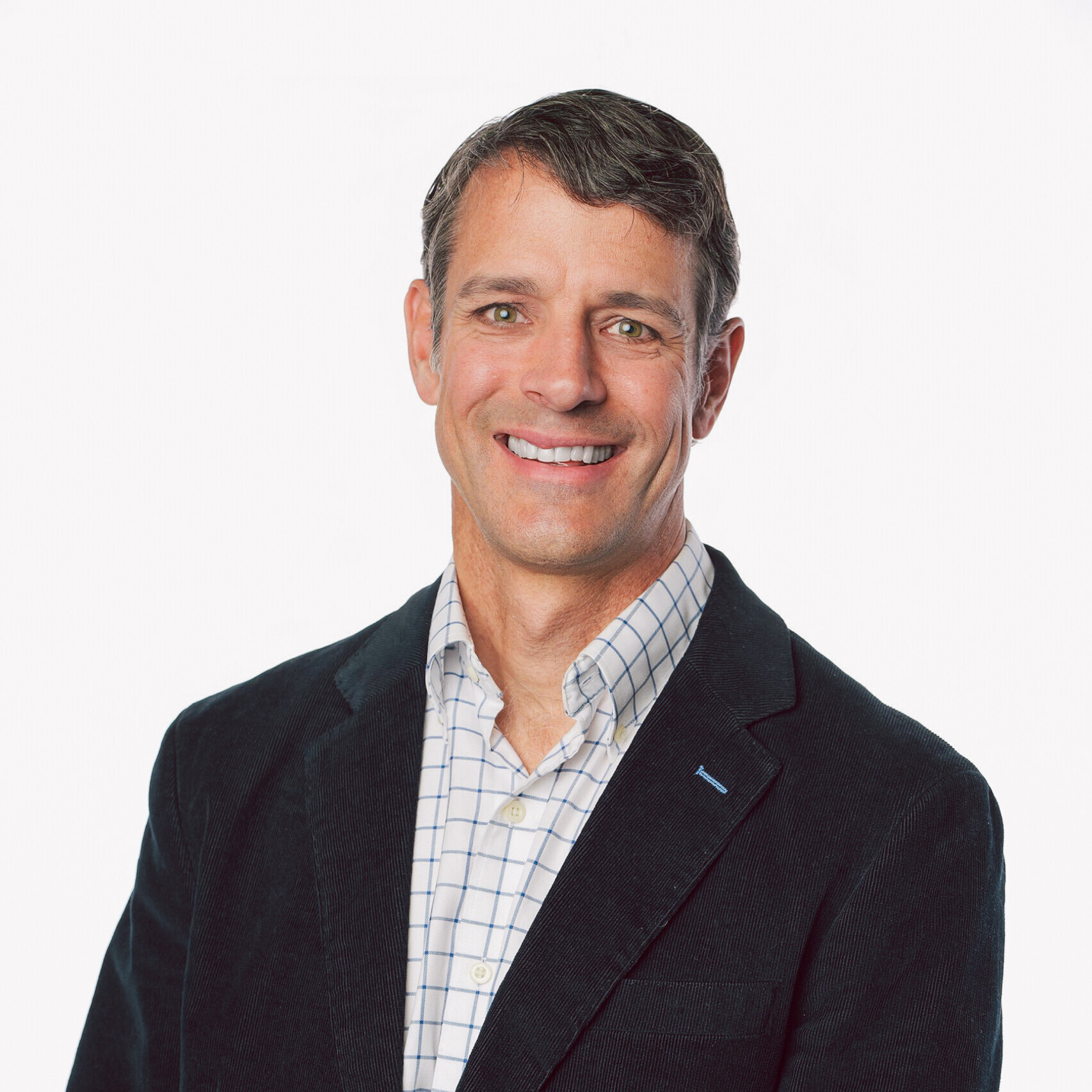
Nate McClennen
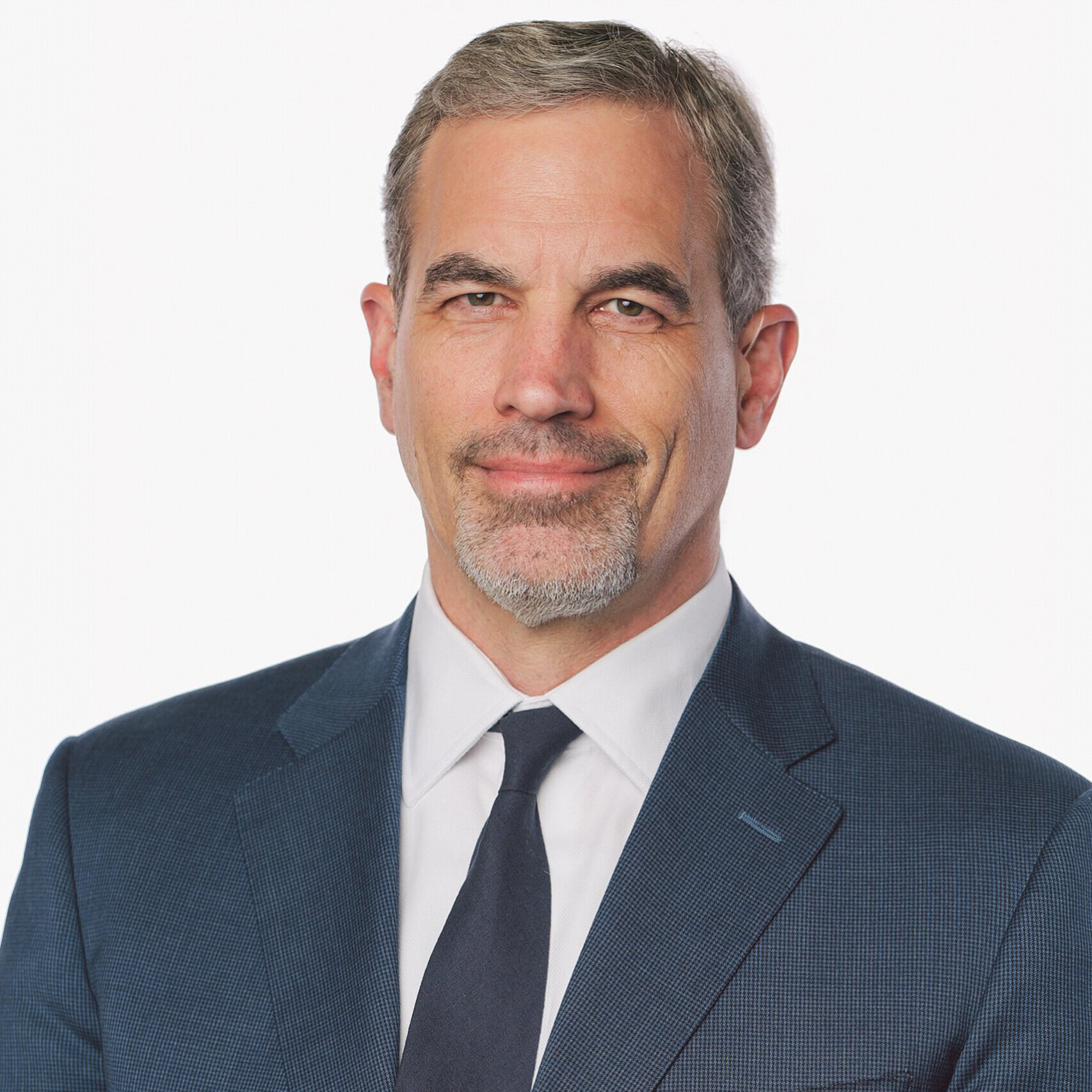


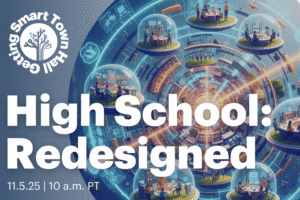
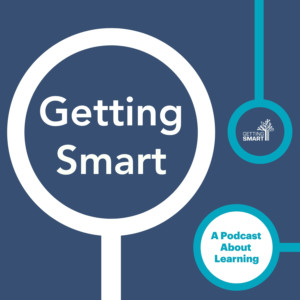


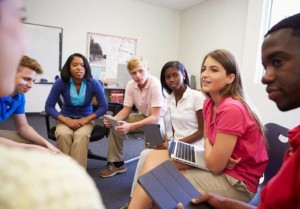
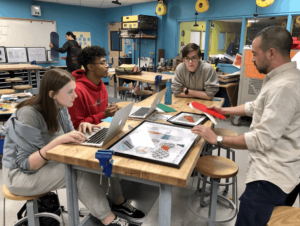
0 Comments
Leave a Comment
Your email address will not be published. All fields are required.